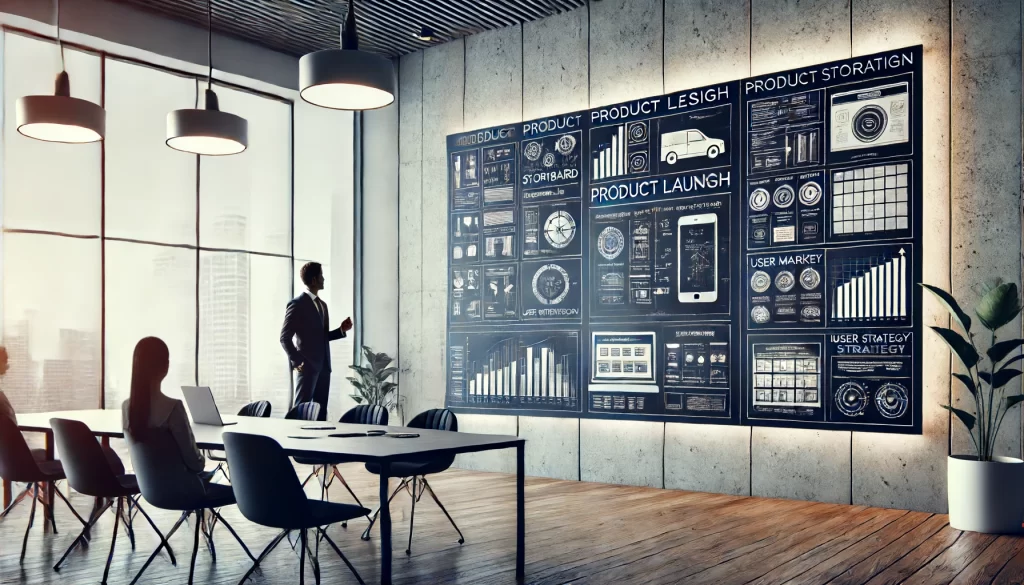Business presentations are an essential tool for conveying information, persuading stakeholders, and inspiring action. With the advent of digital media, the use of filmmaking techniques in business presentations has become increasingly popular. This integration can transform a standard presentation into a captivating visual story that engages the audience and delivers the message more effectively. This article will delve into the essential filmmaking techniques that can elevate your business presentations, including storyboarding, shot composition, lighting, sound design, editing, and visual effects.
Introduction to Filmmaking Techniques in Business Presentations
Filmmaking techniques have long been used in the entertainment industry to tell stories in a compelling and engaging manner. When applied to business presentations, these techniques can enhance the clarity and impact of the message, making it more memorable and persuasive. The key is to use these techniques strategically to support the content of your presentation without overshadowing it.
Real-Life Examples
Example 1: Apple Product Launches
Apple is renowned for its use of filmmaking techniques in its product launch presentations. They often use high-quality video production, dynamic shot compositions, professional lighting, and meticulous editing to showcase their products. Each presentation feels more like a cinematic experience than a traditional business presentation, which captivates the audience and leaves a lasting impression. It’s the kind of polished storytelling that video production companies like Argus HD specialize in—turning ideas into visually compelling narratives that truly engage viewers.
Example 2: TED Talks
TED Talks are another excellent example of how filmmaking techniques can enhance business presentations. The speakers often use storyboarding to plan their talks, ensuring a smooth and logical flow. Professional lighting and sound design are used to create a high-quality production value. The talks are also edited to include cutaways to audience reactions, which adds a layer of engagement and relatability.
Example 3: Dropbox’s Explainer Video
When Dropbox first launched, it used a simple yet highly effective explainer video to communicate its value proposition. The video used clear narration, engaging visuals, and concise editing to explain how the product works. This video played a crucial role in Dropbox’s early growth by effectively communicating the product’s benefits in an easy-to-understand format.
The Power of Storyboarding
Storyboarding is the process of planning out a video or presentation in a series of drawn panels, much like a comic strip. This technique allows you to visualize the flow of your presentation, plan the key points you want to emphasize, and determine the best way to transition between them.
- Benefits of Storyboarding:
- Clarity and Organization: Helps in organizing thoughts and ensuring a logical flow of information.
- Visualization: Provides a visual representation of the presentation, aiding in the identification of potential issues before actual production.
- Efficiency: Saves time during the production phase by providing a clear plan to follow.
To create an effective storyboard for your business presentation:
- Outline Your Key Messages: Identify the main points you want to convey.
- Sketch the Scenes: Draw simple sketches representing each part of your presentation.
- Plan Transitions: Decide how you will move from one point to the next.
- Add Details: Include notes about dialogue, visuals, and any special effects.
Using easy to use presentation software tools can enhance the storyboarding process. With features that allow you to create visual layouts, add engaging transitions, and organize your ideas seamlessly, it makes it easier to bring your storyboard to life.
Shot Composition and Visual Impact
The composition of each shot in your presentation significantly impacts how your audience perceives the information. Good shot composition ensures that the focus remains on the key elements and helps to guide the viewer’s eye to important details.
- Rule of Thirds: Divide your frame into nine equal parts using two horizontal and two vertical lines. Position important elements along these lines or their intersections to create a balanced and engaging composition.
- Leading Lines: Use lines within the scene to direct the viewer’s attention to the focal point. These can be literal lines like roads or implied lines like the direction of a gaze.
- Framing: Frame the subject to highlight it and create a sense of depth. This can be achieved using natural elements like windows or doorways or by strategically placing objects within the scene.
Lighting: Setting the Mood
Lighting plays a crucial role in setting the mood and tone of your presentation. Proper lighting can highlight important elements, create depth, and evoke specific emotions.
- Three-Point Lighting: A standard lighting setup in filmmaking that involves three lights:
- Key Light: The main light that illuminates the subject.
- Fill Light: A softer light that reduces shadows created by the key light.
- Back Light: Light placed behind the subject to separate them from the background and add depth.
- Natural Lighting: Using natural light sources, such as windows, to create a more realistic and relatable setting.
- Color Temperature: Adjusting the color temperature of your lights to create different atmospheres. Warm colors (yellow/orange) evoke coziness and warmth, while cool colors (blue) suggest calmness or sterility.
Sound Design: The Invisible Power
Sound design is often overlooked, but it is a vital component of any presentation. Good sound design enhances the viewer’s experience and ensures that your message is clearly understood.
- Narration and Voiceover: Clear and articulate narration can guide your audience through the presentation. Choose a voice that matches the tone of your message with the help of ai voice cloning software.
- Background Music: Select music that complements the content without overpowering it. The right music can set the pace and mood of your presentation.
- Sound Effects: Subtle sound effects can enhance the realism and engagement of your presentation. For example, the sound of typing during a demonstration of software.
- Bonus Tips: Dedicating time to meticulously select the best music significantly improves the quality of your presentation. For those looking to save time and resources while obtaining high-quality music, exploring an AI song generator can be advantageous.
Editing: The Art of Assembly
Editing is where all the elements of your presentation come together. Effective editing ensures a smooth flow and keeps the audience engaged.
- Pacing: Adjust the length of each segment to maintain interest. Too fast can be overwhelming, while too slow can be boring.
- Transitions: Use transitions to smoothly move from one point to the next. Simple cuts or fades are often more effective than flashy transitions.
- Cutting for Impact: Edit your footage to emphasize key points. Cutting to a close-up during an important statement can make it more impactful.
Visual Effects: Enhancing Reality
Visual effects (VFX) can add a layer of sophistication and interest to your presentation. However, they should be used sparingly and only when they enhance the message.
- Text and Graphics: Use animated text and graphics to highlight key points or data. Motion graphics can make complex information more digestible.
- Green Screen: Allows you to place the presenter or objects in different virtual backgrounds, adding variety and interest.
- Subtle Effects: Small effects like lens flares or slight motion can add a professional touch without distracting from the content.

Practical Applications and Examples
Let’s consider a few scenarios where these filmmaking techniques can be applied to business presentations:
Product Launch
For a product launch, you can create a storyboard that outlines the journey of the product from conception to market. Use shot composition to highlight the product’s features, lighting to set a professional tone, and sound design to emphasize key benefits. Editing can help maintain a dynamic pace, and visual effects can showcase the product in various environments.
Financial Report
In a financial report presentation, clear and engaging visuals are crucial. Use the rule of thirds to structure graphs and charts, and employ lighting to keep the focus on important data. Narration can guide the audience through complex information, and well-timed cuts can keep the presentation moving smoothly.
Training and Tutorials
For training and tutorials, a combination of live-action shots and screen recordings can be effective. Use storyboarding to plan each step of the tutorial, ensuring clarity and logical progression. Good lighting and sound design will keep the audience engaged, while editing and visual effects can highlight important actions and steps.
Conclusion
Incorporating filmmaking techniques into business presentations can significantly enhance their effectiveness. By carefully planning with storyboards, using thoughtful shot composition, managing lighting, designing sound, editing skillfully, and adding visual effects judiciously, you can create presentations that not only inform but also engage and persuade your audience. Whether you are launching a product, presenting financial data, or conducting training sessions, these techniques can help you deliver your message with impact and professionalism.
By embracing the art of filmmaking in your business presentations, you open up new possibilities for communication and storytelling, ensuring your audience remains captivated and your message resonates long after the presentation ends.

Andrej Fedek is the creator and the one-person owner of two blogs: InterCool Studio and CareersMomentum. As an experienced marketer, he is driven by turning leads into customers with White Hat SEO techniques. Besides being a boss, he is a real team player with a great sense of equality.
